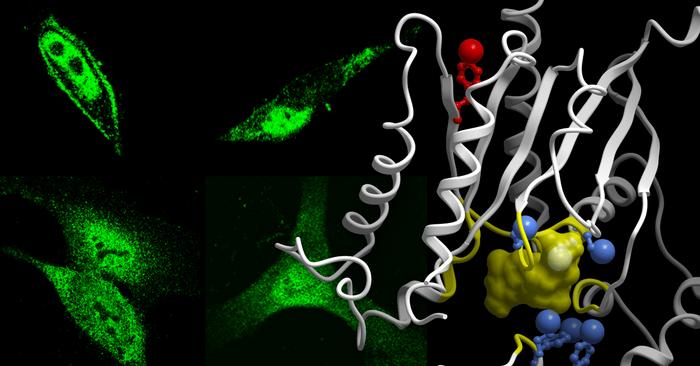Preliminary Research Highlights Potential of University of Utah’s Retinal Surgery Robot
In an era where medical advancements and technological innovations converge, researchers at the University of Utah are making significant strides in the realm of ophthalmic surgery. A groundbreaking endeavor at the John A. Moran Eye Center is focused on developing a state-of-the-art robotic surgical device designed to enhance the precision of eye surgeries. This revolutionary […]


In an era where medical advancements and technological innovations converge, researchers at the University of Utah are making significant strides in the realm of ophthalmic surgery. A groundbreaking endeavor at the John A. Moran Eye Center is focused on developing a state-of-the-art robotic surgical device designed to enhance the precision of eye surgeries. This revolutionary device seeks to tackle the inherent challenges posed by delicate procedures involving the retina, one of the most intricate and vital components of the human eye.
The retina operates as the body’s visual processor, converting light into neural signals relayed to the brain. Surgeons routinely undertake intricate tasks when addressing retinal issues, including repairing retinal detachment or delivering therapeutic agents for inherited retinal diseases. However, the delicacy of these procedures demands unparalleled precision, as surgeons face the daunting task of navigating an environment rife with potential disturbances, including involuntary hand movements and the inevitable motion caused by the patient’s breathing and blinking.
Recognizing the complexity of such surgical endeavors, the collaborative research team at the University of Utah has devised a robust solution: a head-mounted robotic system that markedly enhances surgical precision. By anchoring the robotic device to the patient’s head, the researchers ensure that any natural head movements are neutralized, thereby stabilizing the surgical field. This innovative approach allows the robot to maintain a consistent and reliable positional reference, significantly mitigating the risks associated with manual surgical operations.
One of the standout features of this robotic surgery device is its extraordinary capability to execute movements with unparalleled precision—down to a mere one micrometer. For comparison, this measurement is smaller than the width of a human hair and equivalent to the size of individual cells within the retina. Such remarkable accuracy is achieved by employing a sophisticated haptic interface that enables surgeons to manipulate the robot with natural hand movements while simultaneously scaling down these motions to match the minuscule scale of the surgery.
The research conducted by the team extends beyond theoretical modeling; they have put their innovation to the test using enucleated pig eyes. Publishing their findings in the prestigious journal Science Robotics, the researchers reported successful outcomes when utilizing the robotic system for subretinal injections. This critical step paves the way for refining treatment techniques meant for patients suffering from inherited retinal diseases—a condition which, if left untreated, can lead to severe vision impairments.
Gene therapy represents a promising frontier in treating retinal disorders, allowing researchers to potentially reverse the effects of inherited conditions such as retinitis pigmentosa. However, the delivery of such therapies remains a complex challenge, especially when targeting subretinal spaces that are both minuscule and precariously positioned between delicate layers of retinal cells. Hence, the introduction of the robotic device may represent an essential advancement in delivering these sophisticated treatments effectively and safely.
Another ground-breaking aspect of this invention lies in its potential to transform the patient experience during procedures. Traditionally, eye surgeries involving retinal injections often necessitate the use of general anesthesia due to the complexity and sensitivity of the involved processes. However, the head-mounted design of this robotic system opens the door for administering intravenous (IV) sedation as a viable alternative. This paradigm shift not only enhances patient comfort but also allows for a much quicker recovery time, ultimately leading to safer and more efficient surgeries.
As the research team prepares to transition their device from laboratory settings to clinical applications, they remain laser-focused on the interdisciplinary approach that has characterized their work. The collaboration between the mechanical engineers and ophthalmic specialists has proven essential in realizing this project’s goals. Each contribution, whether from engineers, chemists, or physicists, has shaped the robotic device into a formidable tool that promises to elevate the standards of care in retinal surgery.
While currently in the experimental phase, the potential implications of this robotic device extend far beyond the lab. Its successful integration into surgical practice could revolutionize ophthalmic interventions, ensuring that surgeons are equipped with the means to address increasingly complex treatment paradigms as they arise. The vision for the future of eye surgery appears bright and promising as innovations like this robotic device redefine what’s possible in the realm of retinal healthcare.
In the advent of promising technologies, what lies ahead for patients facing the harsh reality of vision loss presents a new ray of hope. This journey through experimental research underscores the significance of innovation in medicine as it stands on the brink of substantial breakthroughs that will ultimately enhance patient outcomes and advance the field of ophthalmic surgery as a whole.
The ongoing commitment toward refining and optimizing this robotic device continues to be guided by a shared mission: to improve the efficacy of retinal treatments and facilitate better surgical outcomes. As the team looks to the future, the routine promise of robotics within healthcare not only beckons for ongoing exploration but embodies the aspirations of countless patients yearning for effective therapies that restore vision and curb the progression of hereditary retinal ailments.
Undoubtedly, this venture encapsulates a successful story of collaboration, innovation, and the relentless pursuit of excellence—a narrative that will shape the future of eye surgery. As the surgical robot takes its steps closer to reality in operating rooms, the vision becomes clearer: to offer patients the best possible care through the seamless integration of cutting-edge technology and world-class expertise.
### Subject of Research:
Robotic assistance in eye surgery.
### Article Title:
Head-mounted surgical robots are an enabling technology for subretinal injections.
### News Publication Date:
19-Feb-2025.
### Web References:
(N/A)
### References:
(N/A)
### Image Credits:
Moran Eye Center, University of Utah.
Tags: challenges in delicate eye procedurescollaborative research in ophthalmologyhead-mounted robotic systeminnovations in medical technologyJohn A. Moran Eye Center researchophthalmic surgery advancementsprecision in eye surgeryretinal detachment repair technologyrobotic surgical device developmentsurgical precision enhancementtherapeutic agents for retinal diseasesUniversity of Utah retinal surgery robot
What's Your Reaction?

































